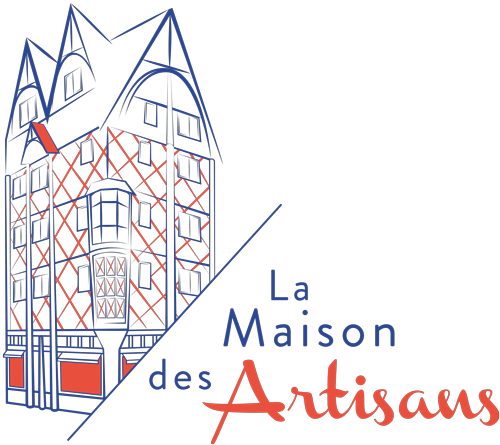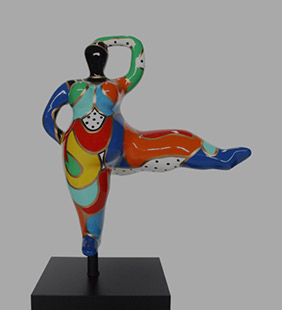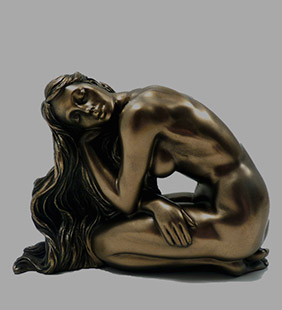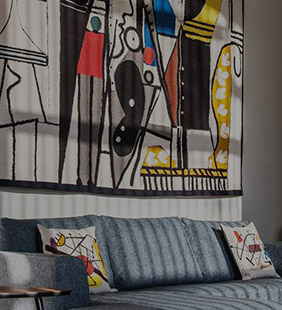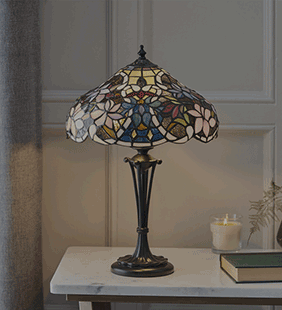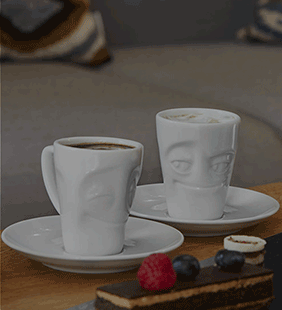Thanks to the opening of its vaulted cellar in 2005, about 1000 years of history can be discovered in Adam's House. This impressive place combines art and history. Behind the cathedral of Angers, standing in the historical city heart, « La Maison d'Adam » (Adam's House) is one of the most famous monument that have to be visited. It is one of the superb architectural testimonies to medieval patrimony that still exists today. « La Maison d'Adam » also named « Maison d'Adam et d'Eve » or « de l'Arbre de Vie » (the Tree of Life) was built near the end of the 15th century. « La Maison des Artisans » (The Craftsmen's House) has been on this site since 1992.
Situated in the Sainte Croix Square, one of the oldest merchant roads of the town next to the cathedral of Saint Maurice, the Maison d'Adam is the most exceptional of the near forty timber-framed houses still in place in Angers. Its imposing dimensions, its complex structure and its enigmatic decor place it amongst the most remarkable works of carpentry of the Middle Ages in France. It owes its name to the figures of Adam and Eve which frame the Tree of Life on the wooden post at the angle of the ground floor. We see it mentioned by its two names during the 17th and 18th centuries. A recent dating study situates the construction date at 1491. Its quality and its importance betray the social status of its builder and successive owners, all of whom were apothecaries.
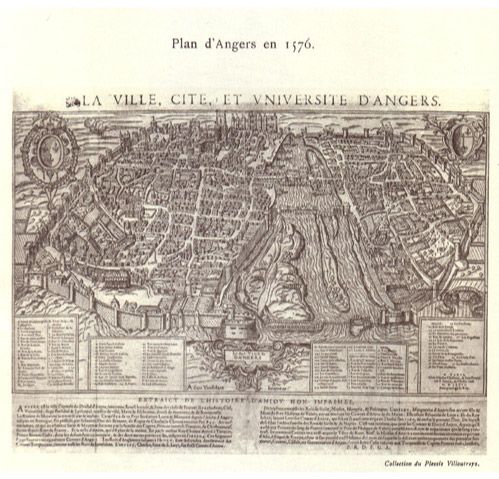 Angers in 1576. The population, estimated at 25,000 inhabitants at the end of the 16th century, made Angers one of the largest cities in France.
Angers in 1576. The population, estimated at 25,000 inhabitants at the end of the 16th century, made Angers one of the largest cities in France.
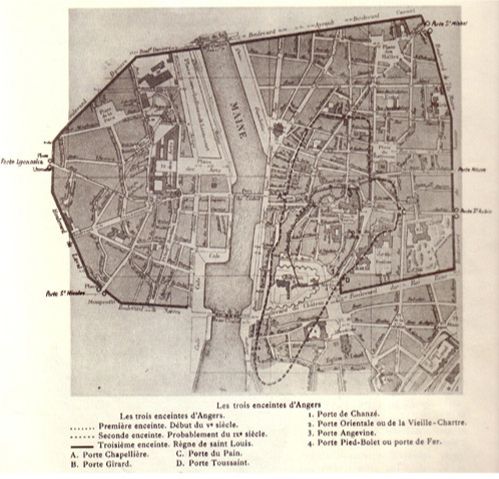 The three enclosures of Angers
The three enclosures of Angers
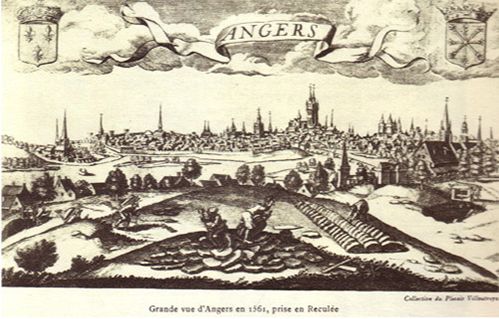 Great view of Angers in 1561, taken back. It shows in the foreground, the slate splitters. At the time, Angers was nicknamed the black city. Why? Because the houses were mostly built of slate.
Great view of Angers in 1561, taken back. It shows in the foreground, the slate splitters. At the time, Angers was nicknamed the black city. Why? Because the houses were mostly built of slate.
Did you know ? The Maison d'Adam was really inspirational for Anatole France to write his novel « l'Orme du Mail » (the Elm of the Mall)
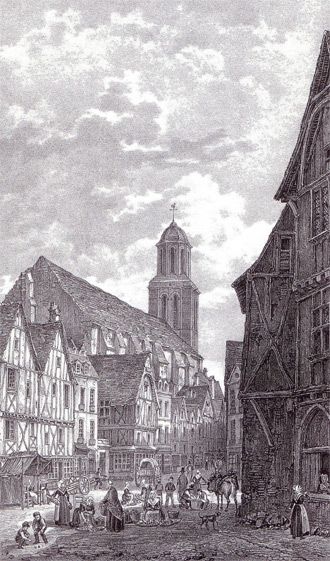 Street and Trinity Church
Street and Trinity Church
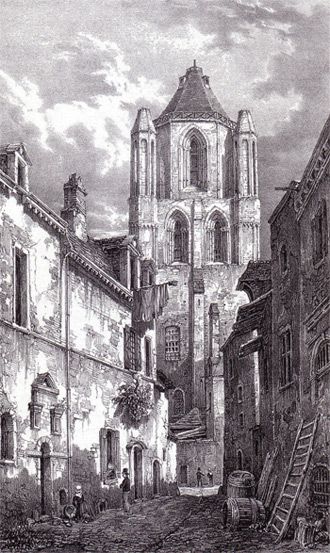 The tower Saint-Aubin
The tower Saint-Aubin
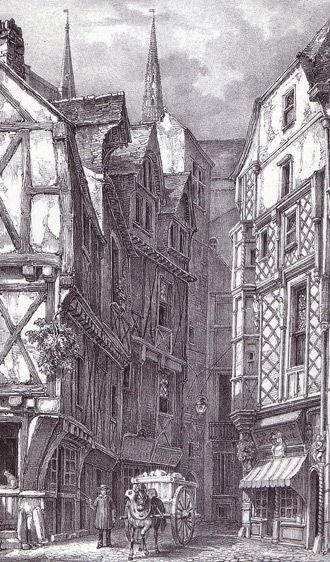 The Adam House formerly adjoining other medieval houses. Until 1860, there were still 300 half-timbered houses in Angers.
The Adam House formerly adjoining other medieval houses. Until 1860, there were still 300 half-timbered houses in Angers.
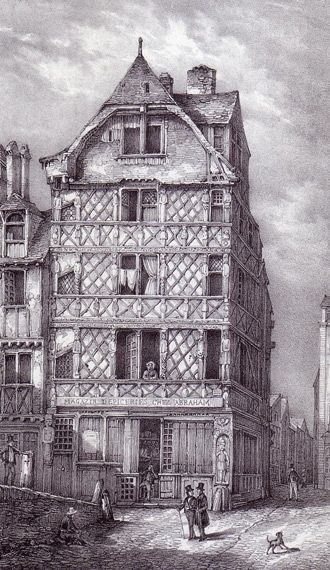 Another merchant's house: the Abraham House (the grocer Denis-Jean-Abraham). Demolished in 1871.
Another merchant's house: the Abraham House (the grocer Denis-Jean-Abraham). Demolished in 1871.
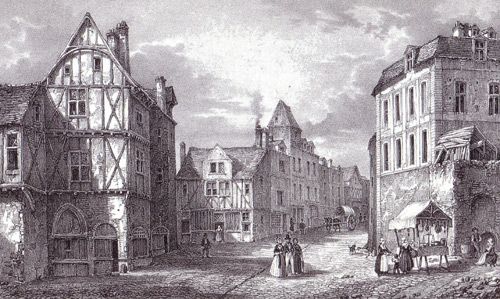 The old street Saint Nicolas in the Doutre
The old street Saint Nicolas in the Doutre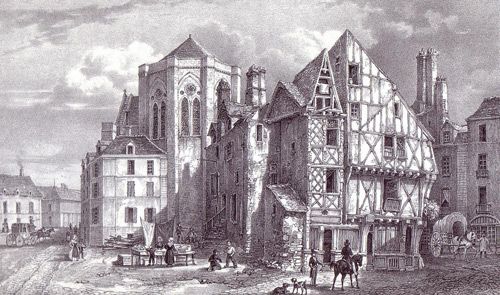 The old Sainte Croix square with the choir of the cathedral
The old Sainte Croix square with the choir of the cathedralToday it stands clear on the square, but the Maison d'Adam was originally at the crossroads of two narrow streets, bordered by equally narrow commercial dwellings. This privileged position allowed the development of two beautiful façades, in total ten meters of facade on each street (twice the usual width) and six levels in height instead of the traditional four.
The reduction of the gables, the solid diamond-shaped panels, the highly moulded projecting storeys, held up by thick posts sculpted in one block, all illustrate in a truly brilliant way the know-how of carpenters at the peak of their skill. The overhanging turret at the angle of the building holds miniscule cabinets, « writing-cases » or « counters », borrowed from the dwellings of notables, which enrich the exterior in a most picturesque manner.
The richness of the sculpted decor is what has made this house so specially renowned. Ornamental patterns of a natural inspiration such as the knots of trees, or purely decorative on the theme of twists, cover the entirety of the wooden posts. The scenes with figures are particularly numerous, each post portraying a character or an animal.
The iconography, which has been at the root of many alchemical hypotheses, swings between the two great poles of medieval sensitivity. The religious subjects such as the Virgin Mary or the angel of the Annunciation , the pelican giving its blood to its young (symbol of the Resurrection), Saint Michel or Saint George slaying the dragon, alternate with a wide range of secular or « vulgar » scenes or figures. These include the movingly serious couple of lovers, the flute or musette players, diverse variations on the theme of fantasy (centaurs, griffons, chimeras), not forgetting the famous « Tricouillard » (three-testicled man). It is necessary to imagine all of these decors adorned with bright colours, which disappeared forever after important modifications to the building in 1814.
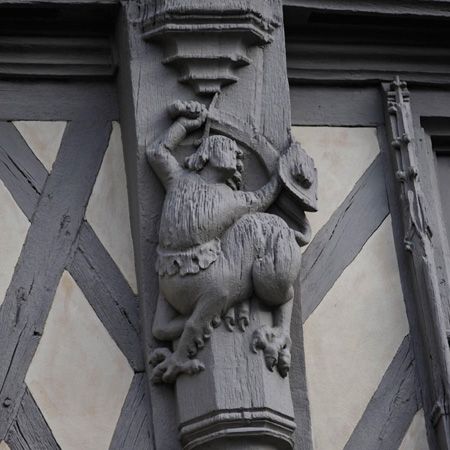 The centaur
The centaur
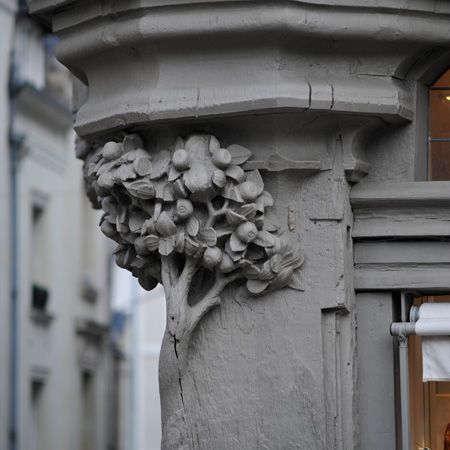 The tree of Life
The tree of Life
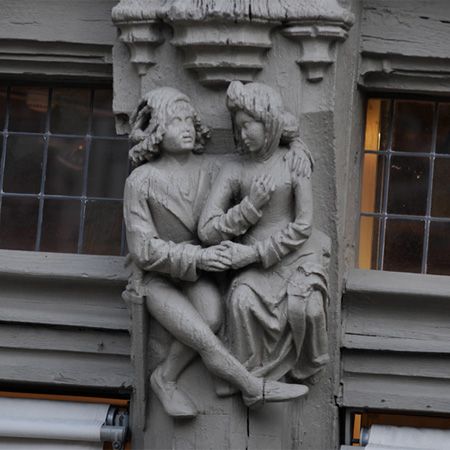 Lovers
Lovers
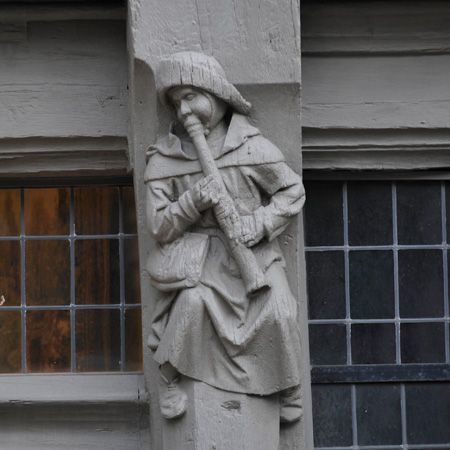 The chalémie player
The chalémie player
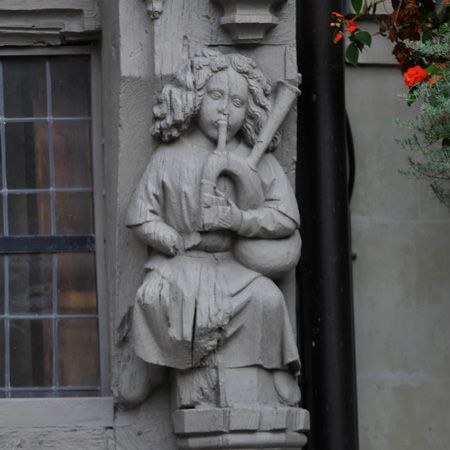 The bagpiper
The bagpiper
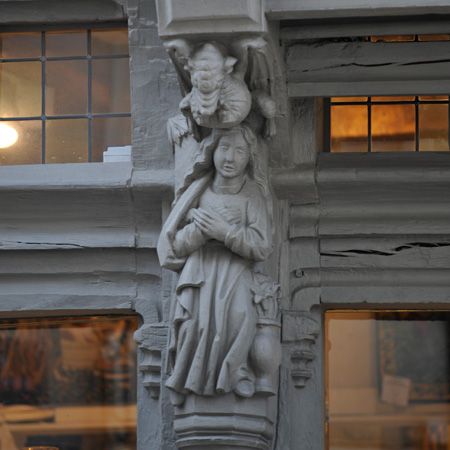 Mary threatened by the dragon
Mary threatened by the dragon
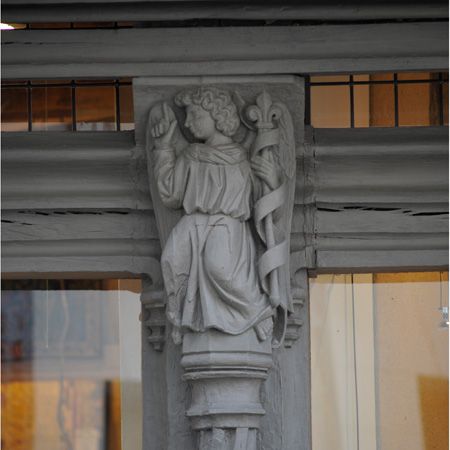 The angel of the annunciation
The angel of the annunciation
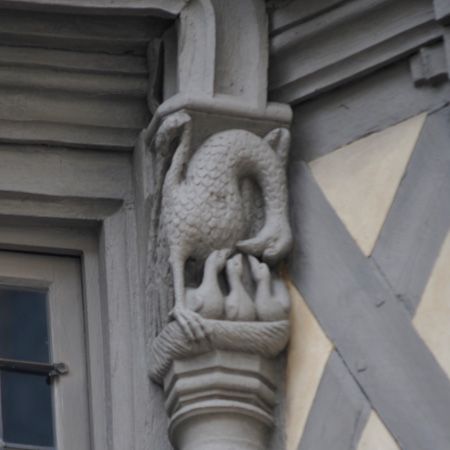 The Pelican
The Pelican
 Samson slaying the animal
Samson slaying the animal
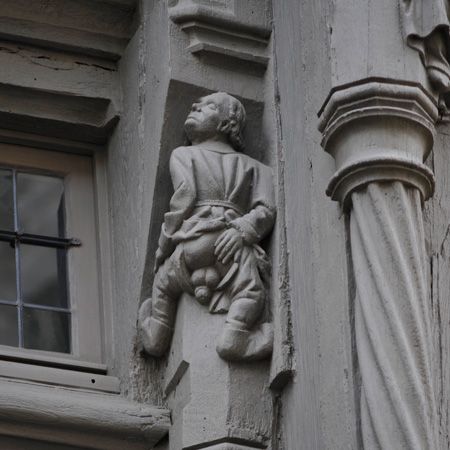 The Tricouillard or famous Angevin
The Tricouillard or famous Angevin
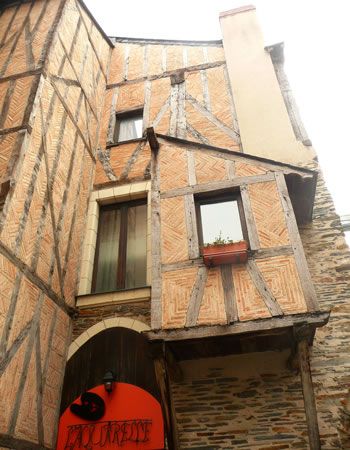 Half-timbered house rue Beaurepaire (La Doutre)
Half-timbered house rue Beaurepaire (La Doutre)
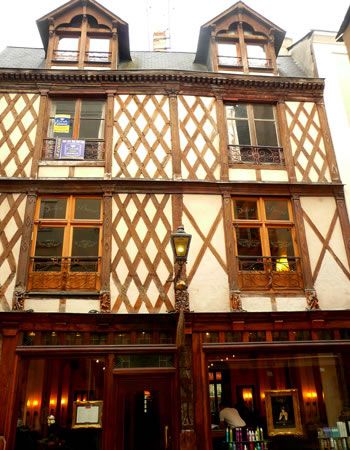 Half-timbered house rue St Laud (City Center)
Half-timbered house rue St Laud (City Center)
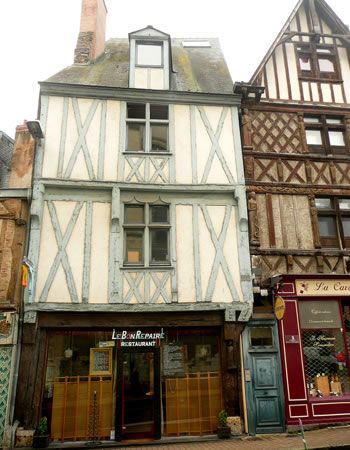 Half-timbered houses rue Beaurepaire (La Doutre)
Half-timbered houses rue Beaurepaire (La Doutre)
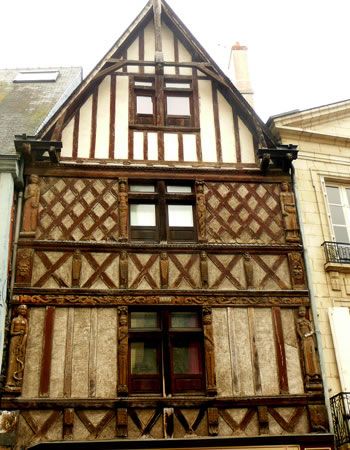 The famous house of Simon Poisson, late 16th century (La Doutre)
The famous house of Simon Poisson, late 16th century (La Doutre)
The timber was a very developed means of construction in Angers until the end of the 16th century.
This material was used for the facades, mixed with local stone for the walls that were not visible, mostly along the large merchant roads. A few houses here and there and a well-preserved group of them in the Laiterie Square in the Doutre district of Angers remind us of this period.
